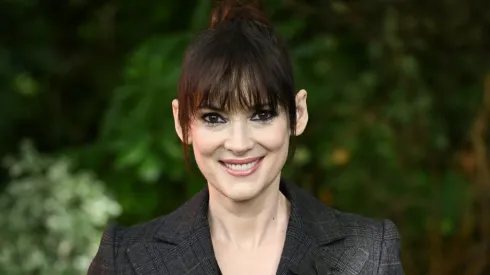Winona Ryder emerged in the late 1980s as one of the most distinctive and influential actresses of her time, rapidly transitioning from a teenage film debut to a bona fide Hollywood star.
Her early performances—notably as the gothic and deadpan Lydia Deetz in Beetlejuice and the fiercely intelligent Veronica Sawyer in the cult classic Heathers—cemented her image as the era’s definitive anti-heroine and a symbol for the alternative youth culture.
After a brief hiatus, her powerful return as the desperate and frantic Joyce Byers in the global phenomenon Stranger Things introduced her enduring talent to a new generation, affirming that her career, marked by memorable and emotionally resonant characters, continues to shape the landscape of popular culture.
Joyce Byers, Stranger Things (2016-Present)
This role marked her powerful return to the forefront of global pop culture. As the desperate, frantic, yet fiercely determined single mother, Joyce Byers became the emotional heart of Hawkins. Ryder channeled the primal anguish of a parent who refuses to accept her son is lost, creating a deep emotional anchor for the supernatural series and cementing her appeal across generations.
Veronica Sawyer, Heathers (1989)
More than just a dark teen comedy, Heathers emerged as a cynical manifesto against manufactured popularity. Ryder’s role as Veronica, the smart, disaffected girl seeking to dismantle her high school’s social tyranny, allowed her to channel a devastating irony. Her performance not only achieved cult status but also influenced the archetype of the rebellious high school anti-heroine for decades to follow.
Lydia Deetz, Beetlejuice (1988)
The role that defined her gothic and melancholic aesthetic in the late 80s. Lydia Deetz, the death-obsessed teenager who can see the ghosts inhabiting her new home, established the first of her iconic collaborations with director Tim Burton. Her portrayal created an instant connection with young misfits, demonstrating that sadness could be deeply captivating.
Jo March, Little Women (1994)
In Gillian Armstrong’s acclaimed adaptation, Ryder embodied the ambitious and rebellious Jo March, the untamed spirit of the March family. Her sensitive and believable portrayal of the young writer fighting for independence in 19th-century America earned her an Academy Award nomination for Best Actress, showcasing her serious dramatic range beyond quirky roles.
Lelaina Pierce, Reality Bites (1994)
This film perfectly captured the generational heartbeat of twenty-somethings in the 90s, becoming the unofficial face of Generation X. Ryder, as the idealistic but disillusioned documentarian Lelaina, navigated post-college angst and the search for meaning during the grunge decade. Her style, wardrobe, and world-weary attitude helped define a cultural era.
Kim Boggs, Edward Scissorhands (1990)
In her second collaboration with Tim Burton, Ryder underwent a cinematic transformation. Moving past her gothic phase, she portrayed the sweet and innocent Kim, the suburban cheerleader who falls for the strange, gentle Edward. The iconic scene of her dancing in the snow, anchored by Ryder’s performance, remains one of the most lyrical and romantic moments in her filmography.
Susanna Kaysen, Girl, Interrupted (1999)
Taking on the lead role and serving as an executive producer, Ryder brought to the screen the memoir of a young woman admitted to a psychiatric hospital in the 1960s. Her performance as Susanna, grappling with maladjustment and a borderline personality diagnosis, was raw and complex, serving as a powerful vehicle for exploring female identity and friendship.
May Welland, The Age of Innocence (1993)
Under the direction of Martin Scorsese, Ryder demonstrated a striking maturity as May Welland, the beautiful and perfectly proper engaged socialite. Her performance—subtly manipulative beneath a façade of Victorian innocence—provided a crucial contrast to the film’s central passion, earning her her first Oscar nomination (Best Supporting Actress).
Mina Harker, Bram Stoker’s Dracula (1992)
In Francis Ford Coppola’s lavish Gothic vision, Ryder took on the dual role of Elisabeta and Mina Harker. Her performance anchored the epic tale of horror and romance, bringing a deep, romantic fervor and dignity to the Victorian heroine destined to reunite with her immortal lover across “oceans of time.”
Charlotte Flax, Mermaids (1990)
One of her first major breakout roles, Charlotte Flax was a religious, hypochondriac teenager constantly clashing with her bohemian mother (Cher). Charlotte’s witty narration and the dramatic family conflict earned Ryder her first Golden Globe nomination, highlighting her early capacity for dramatic comedy.
